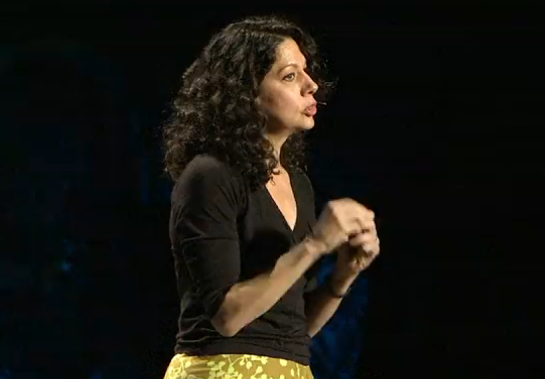Of course, you've just heard and you already know that we're running out of antibiotics.
当然,你一定听说过,而且你早就知道了,我们快要没有有效的抗生素了。
Bacteria are incredibly multi-drug-resistant right now, and that's because all of the antibiotics that we use kill bacteria.
现在的细菌都拥有不可思议的多重耐药性,而这都是因为这些抗生素的工作原理都是杀死细菌。
They either pop the bacterial membrane, they make the bacterium so it can't replicate its DNA.
它们要么是使细菌的细胞膜破裂,要么就是不让细菌复制自己的DNA。
We kill bacteria with traditional antibiotics and that selects for resistant mutants.
当我们用传统抗生素来杀菌时,会同时培养筛选出有耐药性的突变菌株。
And so now of course we have this global problem in infectious diseases.
所以,我们有了全球性的感染病问题。
We thought, well what if we could sort of do behavior modifications,
我们想,如果我们可以稍微更改这些细菌的行为,
just make these bacteria so they can't talk, they can't count, and they don't know to launch virulence.
只是让这些细菌无法交谈,无法计数,它们就不知何时发起毒性攻击了。
And so that's exactly what we've done, and we've sort of taken two strategies.
这就是我们已经完成的实验,我们使用了两种不同策略。

The first one is we've targeted the intraspecies communication system.
第一种,我们锁定菌种内通讯系统。
So we made molecules that look kind of like the real molecules -- which you saw -- but they're a little bit different.
我们制造了一些看起来跟真的分子很像的分子,你们可以看到,它们间只有一点点的不同。
And so they lock into those receptors, and they jam recognition of the real thing.
因此,它们会锁住这些受体,并且干扰受体辨识真正的分子。
By targeting the red system, what we are able to do is to make species-specific, or disease-specific, anti-quorum sensing molecules.
既然锁定红色的系统,我们就可以制造针对菌种,或是针对疾病的“反聚量感应”分子。
We've also done the same thing with the pink system.
我们也对粉红色系统做了同样的事情。
We've taken that universal molecule and turned it around a little bit so that we've made antagonists of the interspecies communication system.
我们使用那种通用分子,将之做了一些更改,我们做了一些拮抗剂,它们都是针对菌种间的通讯系统。
The hope is that these will be used as broad-spectrum antibiotics that work against all bacteria.
我们希望这些分子可以用来作广谱抗生素,对所有细菌都有效。



